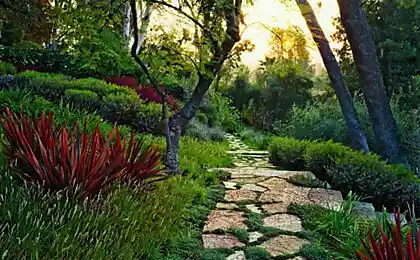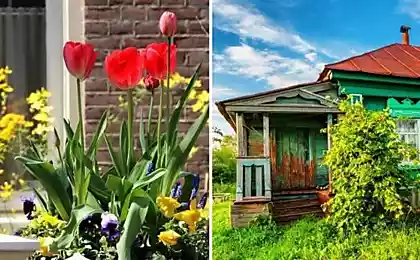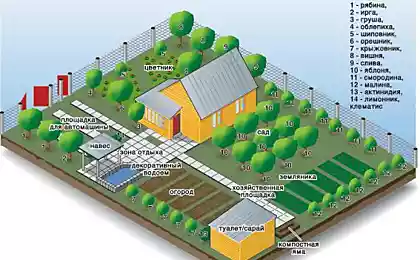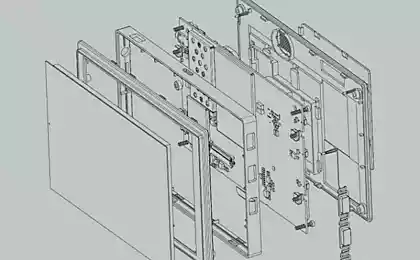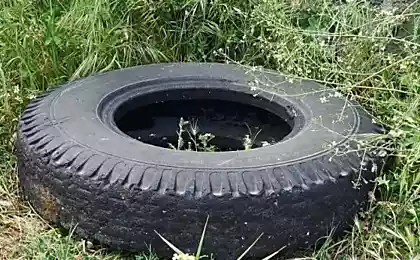576
Garden paths with their hands, stacking options and design
Track from the gate and the gates to your suburban home — the business card of the whole plot. Tracks can be arranged in different styles and they will delight the eyes of you and your family members. Today we will talk about how to make these tracks his own hands, without spending a lot of money, and using a variety of materials, from wood to plastic bottles.
Let's start with planning. To work not had to redo it, you need to initially determine exactly where will be the most important objects on your plot, which will keep track. For example, from home to the Banya (or sauna), from the house to the greenhouse, from the greenhouse to the barn, and so on. Also when making a plan one must consider not only the main tourist attractions, but also accommodation of existing trees on the site.
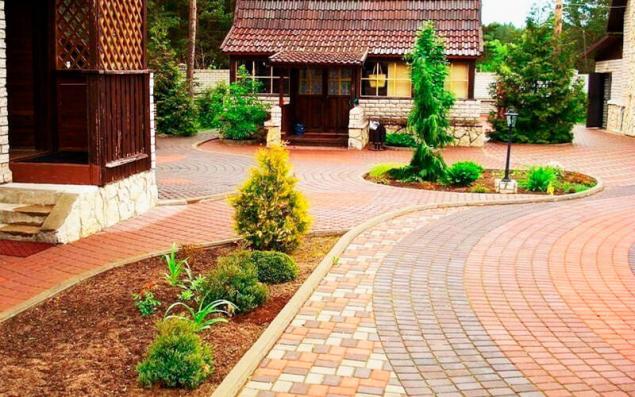
The next step is to count the number of people using these tracks and the approximate frequency of their movement. This will depend on the width of your paths. For example, from the house to the bath can make the track width from 1 m to 1.2 m, so it could easily disperse 2 people. So it makes sense to make the path from the house (or gazebo) to the grill. But from the shed to the greenhouse (or from the greenhouse to the house) can make the track narrower: up to 80 cm wide. It is unlikely that the traffic on this stretch of the country house will be particularly busy.
Next — preparing for the main work. Define the shape of the tracks. Whether they are straight or tortuous, to have the right dimensions, or do you prefer asymmetry — all you need to decide before you start laying the tracks. Or better yet, make a project with drawing. Paths on the site must be above ground level. Plan with a margin of 3-5 cm, as through time the earth usage.
Rainfall and the water didn't destroy the tracks, it is necessary to provide them incline to 4% and fit to drain water (e.g., trays). Make marks on where and how to place your track. To do this, hammer the pegs and pull the rope between them. Then remove from soil up to 30 cm of the surface and fill the resulting space rubble. It will become the basis of future tracks. You can also use sand or hydroplane.
The trail of rubbleis The simplest path is just rubble. When building a walkway of gravel is necessary to make a hole to 15 cm, then pour the Foundation, and then lay a 5 cm layer coatings of better quality and more comfortable for walking material. Next, you pour a good coating of water, pounding the surface and sprinkle the top with coarse sand. All the trail of rubble is ready! This does not slip in the winter and dries very quickly after rain in the warm season.
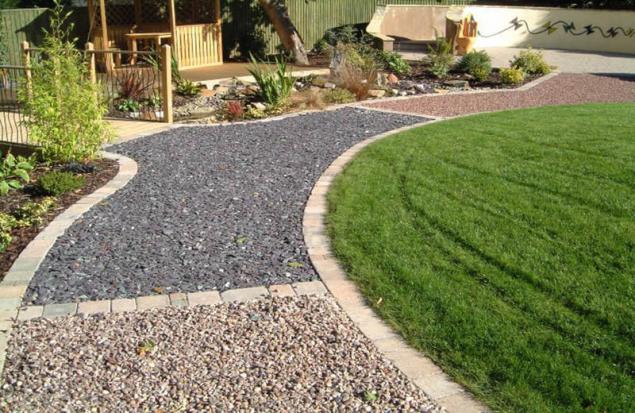
Carpet tile or brickIf you want to use paving slabs — this will be a bit more expensive. The tile you buy ready, preferably with a rough surface. Where goes most people necessary to fix the tiles with mortar, so as not to shift it twice a year. Prepare the base under the tiles, by selecting a soil as well as gravel paths, and pour back the sand. Lay back your tile. In order to ensure that shrinkage and compaction of the surface — use a rubber hammer.
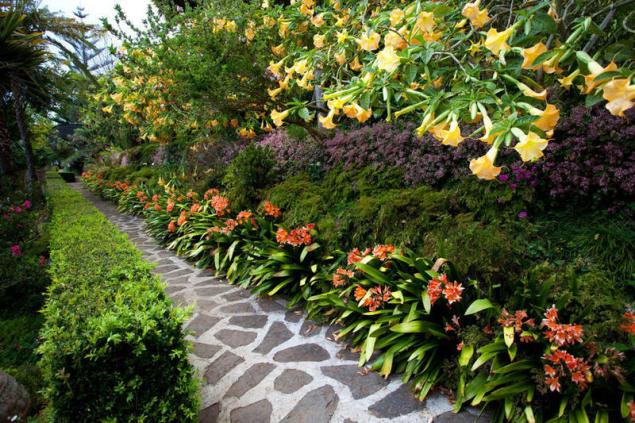
Periodically check the evenness of the resulting surface layer or to the wood Board. Oh, and sand before laying also, it is necessary to stamp.
Paths of brick, an even more expensive pleasure, if only you won't use and broken bricks. For laying tracks of brick is the trench. Its depth equal to the height of a brick, which was laid on its side. The bottom of the trench you covered with gravel, check the level of the filling and begin to lay the bricks. For the naturalness of appearance of the track and sometimes between the bricks leave the cracks, cover them with sand and water. Later there the grass will grow and your track will acquire a more natural look.
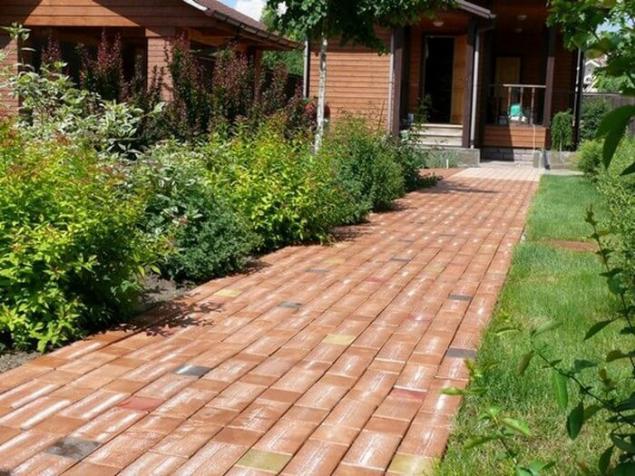
Wooden garden pathsPaths can be also made of wood. Better to take hard rock — of course, if you don't live where elevated humidity level. Wooden walkway for this climate are not suitable. If the climate's all right — choose to cover the bars or kruglyashi with a minimum thickness of 20 cm To enhance the longevity of service bars to be treated with oil and bottom, where they will have contact with the soil — and liquid asphalt. As the basis for these tracks are well suited to the sand. The largest bars spread around the edges of the track. After all cover with sand and water.

Exotic tracksAnd the latest version as of today — tracks from plastic bottles. If you really want, for this purpose you can use even a material such as a bottle. Its only drawback — it slip much after a rain. First count how many bottles will you need and be the "building blocks" in the right quantity. Then fill all the bottles with sand. If you get creative and poured into bottles of sand of different colors — they will look even more beautiful and brighter. The land for these purposes will not work: on the bottles, once formed sagging dents.
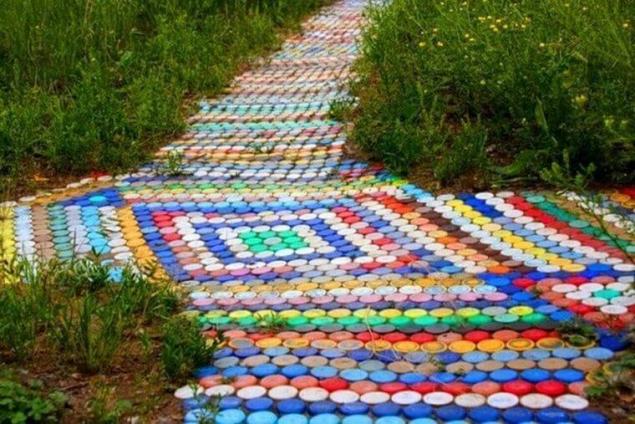
Then — as with the other tracks. First, pour gravel, then sand. The track must be above the level of the plot, otherwise in the rain she will be under water. The space between the bottles again you sleep sand. Put on top of Board and align the track. Ready! published
Source: estp-blog.ru/rubrics/rid-38109/
Let's start with planning. To work not had to redo it, you need to initially determine exactly where will be the most important objects on your plot, which will keep track. For example, from home to the Banya (or sauna), from the house to the greenhouse, from the greenhouse to the barn, and so on. Also when making a plan one must consider not only the main tourist attractions, but also accommodation of existing trees on the site.

The next step is to count the number of people using these tracks and the approximate frequency of their movement. This will depend on the width of your paths. For example, from the house to the bath can make the track width from 1 m to 1.2 m, so it could easily disperse 2 people. So it makes sense to make the path from the house (or gazebo) to the grill. But from the shed to the greenhouse (or from the greenhouse to the house) can make the track narrower: up to 80 cm wide. It is unlikely that the traffic on this stretch of the country house will be particularly busy.
Next — preparing for the main work. Define the shape of the tracks. Whether they are straight or tortuous, to have the right dimensions, or do you prefer asymmetry — all you need to decide before you start laying the tracks. Or better yet, make a project with drawing. Paths on the site must be above ground level. Plan with a margin of 3-5 cm, as through time the earth usage.
Rainfall and the water didn't destroy the tracks, it is necessary to provide them incline to 4% and fit to drain water (e.g., trays). Make marks on where and how to place your track. To do this, hammer the pegs and pull the rope between them. Then remove from soil up to 30 cm of the surface and fill the resulting space rubble. It will become the basis of future tracks. You can also use sand or hydroplane.
The trail of rubbleis The simplest path is just rubble. When building a walkway of gravel is necessary to make a hole to 15 cm, then pour the Foundation, and then lay a 5 cm layer coatings of better quality and more comfortable for walking material. Next, you pour a good coating of water, pounding the surface and sprinkle the top with coarse sand. All the trail of rubble is ready! This does not slip in the winter and dries very quickly after rain in the warm season.

Carpet tile or brickIf you want to use paving slabs — this will be a bit more expensive. The tile you buy ready, preferably with a rough surface. Where goes most people necessary to fix the tiles with mortar, so as not to shift it twice a year. Prepare the base under the tiles, by selecting a soil as well as gravel paths, and pour back the sand. Lay back your tile. In order to ensure that shrinkage and compaction of the surface — use a rubber hammer.

Periodically check the evenness of the resulting surface layer or to the wood Board. Oh, and sand before laying also, it is necessary to stamp.
Paths of brick, an even more expensive pleasure, if only you won't use and broken bricks. For laying tracks of brick is the trench. Its depth equal to the height of a brick, which was laid on its side. The bottom of the trench you covered with gravel, check the level of the filling and begin to lay the bricks. For the naturalness of appearance of the track and sometimes between the bricks leave the cracks, cover them with sand and water. Later there the grass will grow and your track will acquire a more natural look.

Wooden garden pathsPaths can be also made of wood. Better to take hard rock — of course, if you don't live where elevated humidity level. Wooden walkway for this climate are not suitable. If the climate's all right — choose to cover the bars or kruglyashi with a minimum thickness of 20 cm To enhance the longevity of service bars to be treated with oil and bottom, where they will have contact with the soil — and liquid asphalt. As the basis for these tracks are well suited to the sand. The largest bars spread around the edges of the track. After all cover with sand and water.

Exotic tracksAnd the latest version as of today — tracks from plastic bottles. If you really want, for this purpose you can use even a material such as a bottle. Its only drawback — it slip much after a rain. First count how many bottles will you need and be the "building blocks" in the right quantity. Then fill all the bottles with sand. If you get creative and poured into bottles of sand of different colors — they will look even more beautiful and brighter. The land for these purposes will not work: on the bottles, once formed sagging dents.

Then — as with the other tracks. First, pour gravel, then sand. The track must be above the level of the plot, otherwise in the rain she will be under water. The space between the bottles again you sleep sand. Put on top of Board and align the track. Ready! published
Source: estp-blog.ru/rubrics/rid-38109/


